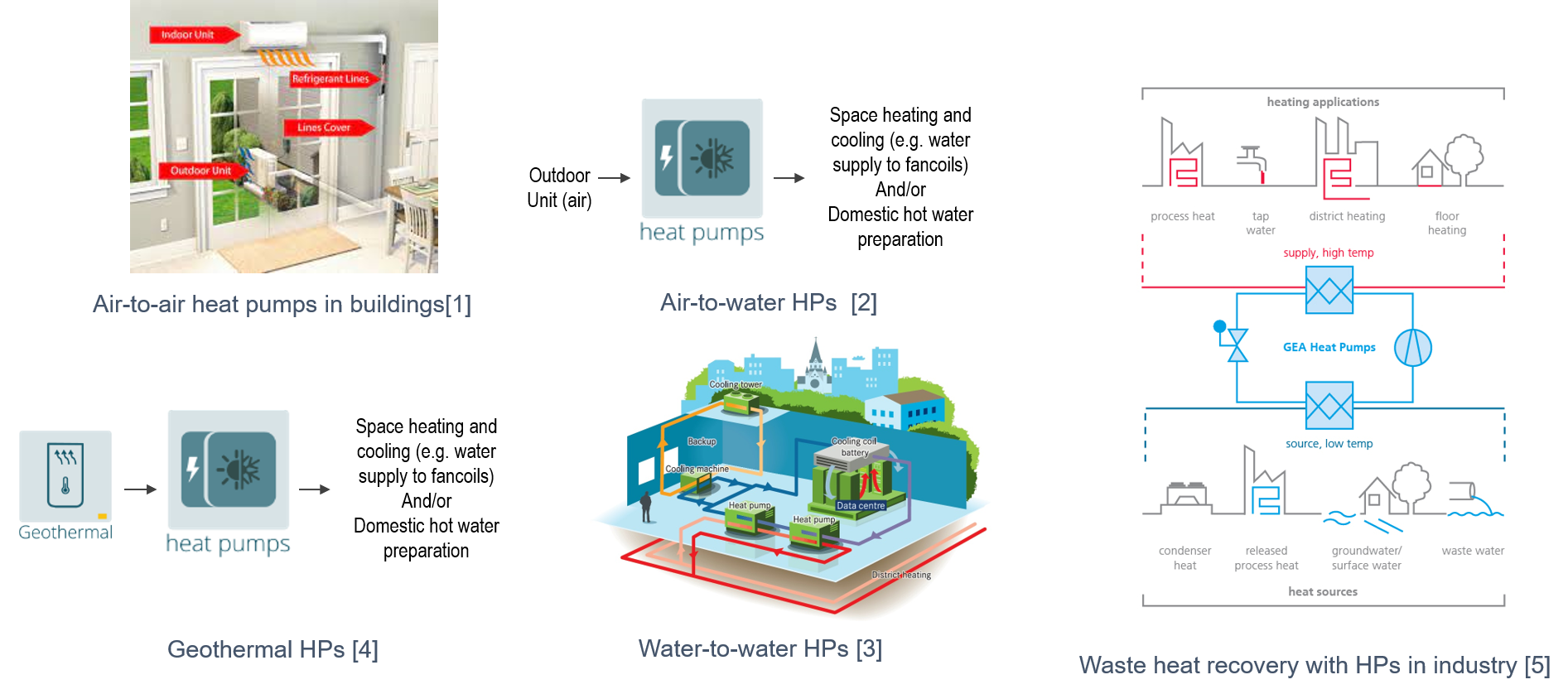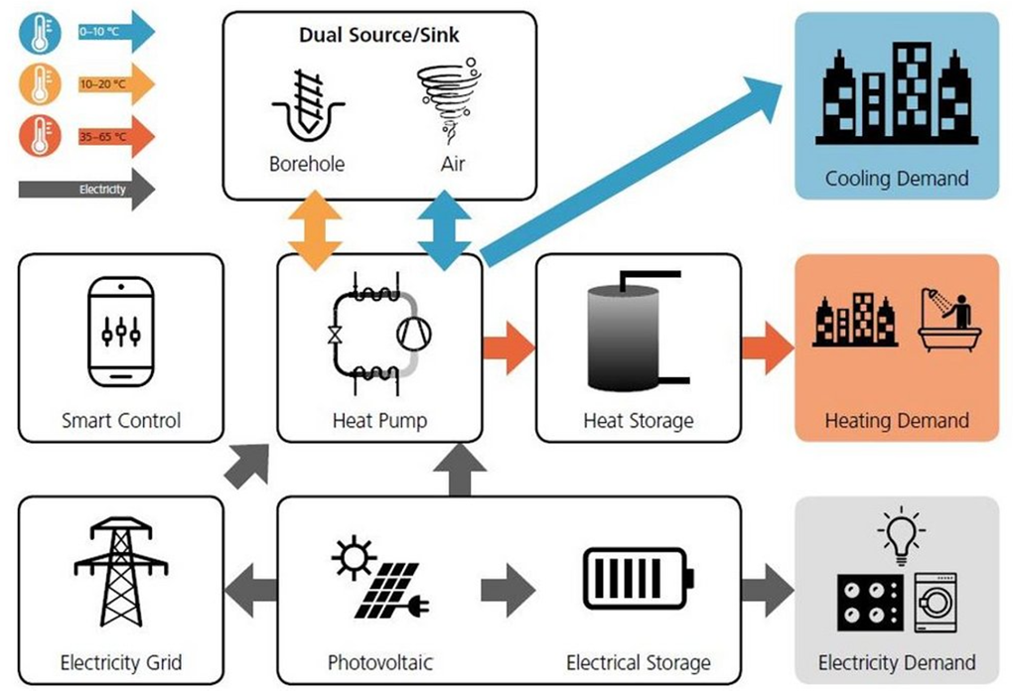Heat Pumps (HP) are conversion devices able to transfer heat from a lower temperature heat source into a higher temperature heat sink. There are several types of HP (electricity compression heat pumps, gas driven HP, heat driven HP, etc.), the most common and efficient the electrical ones. When electricity comes from renewables, it can be considered green. Due to its versatility and high energy efficiency, the development of HP technology will be crucial in this transition toward electrification and decarbonisation of cities.
Heat pumps have traditionally used refrigerants with high global warming potential (GWP), being potentially releasers of greenhouse gases to the atmosphere (through leakages). The use of low-impact refrigerants is a need already covered by regulations, and expected to increase in the future. In fact, F-Gas regulation [2] imposes a series of restrictions on the use of refrigerants until 2030, phasing out some higher GWP refrigerants soon, which paves the way for the use of natural refrigerants (e.g. CO2, propane, and ammonia).

Figure: an overview of heat pumps types (https://solarstore.biz/heat-pumps/)
Heat pumps have characteristics that make them very interesting for using it in many applications, such as near-zero energy buildings (NEZB), district heating and cooling networks (distributed in every building or central heat pumps), positive energy districts, energy communities, and by combination with other sources (geothermal, solar, etc). NZEB is designed to have a very low energy demand, which is largely covered by energy from renewable sources, including the self-production of renewable energy. In this context and considering residential energy consumption, the HP is imposed as a technology for the future.
New developments of HPs are being raised for decarbonisation of industries, electrification of district heating and cooling networks, utilization of waste heat (to upgrade it and inject it in networks) and for utilizing both sinks (condenser and evaporator) at the same time (using dual source heat exchanger, see example below).

Figure: an overview of heat pumps applications

Comments ()